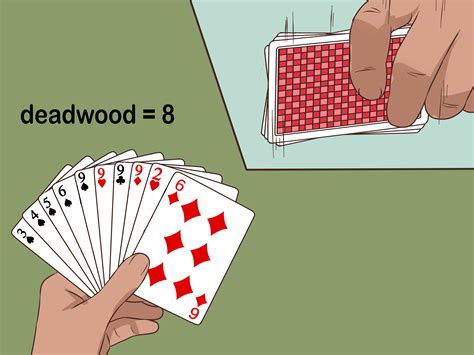How to Play Gin Rummy: A Comprehensive Guide
Gin Rummy, a classic card game, offers a delightful blend of strategy and luck. This comprehensive guide will teach you everything you need to know to play, from basic rules to advanced strategies. Whether you're a complete beginner or looking to sharpen your skills, read on to become a Gin Rummy master!
Understanding the Basics: Gin Rummy Rules
Gin Rummy is played with two players and a standard 52-card deck. The goal is to be the first to score 100 points by melding your cards into sets and runs.
Key Terminology:
- Melding: Arranging your cards into sets (three or four cards of the same rank) and runs (three or more cards of the same suit in sequence).
- Gin: A hand where all cards are melded.
- Knock: Discarding a card to end your turn, indicating that your hand is close to being melded.
- Deadwood: Cards that are not melded. The goal is to minimize your deadwood.
- Undercut: When a player knocks and their opponent has fewer deadwood points.
Gameplay Steps:
-
Dealing: The cards are shuffled, and each player receives 10 cards. The remaining cards are placed face down to form the stock pile. The top card of the stock is turned face up to start the discard pile.
-
Drawing a Card: Players take turns drawing either the top card from the stock pile or the top card from the discard pile.
-
Discarding a Card: After drawing a card, the player must discard one card face up onto the discard pile.
-
Melding and Knocking: A player can knock when their deadwood (unmelded cards) totals 10 points or less. They then reveal their melds and calculate their deadwood points.
-
Scoring: If a player achieves Gin (no deadwood), they score 25 points plus the opponent's deadwood points. If a player knocks, the opponent's deadwood points are subtracted from the knocker's deadwood points, and the result is added to their score.
Card Values in Gin Rummy:
- Ace: 1 point
- 2-10: Face value
- Jack, Queen, King: 10 points
Advanced Strategies for Gin Rummy Mastery:
Counting Cards: Pay attention to the cards that have been discarded. This helps you deduce which cards are likely to be held by your opponent, aiding your strategic melding.
Discarding Wisely: Don't discard cards that are likely to help your opponent create melds. Choose cards that are least likely to benefit your opponent.
Recognizing Opponent's Potential Melds: Anticipate your opponent's strategy based on their discards. This allows you to outmaneuver them.
Knowing When to Knock vs. Gin: While Gin is the ultimate goal, sometimes knocking with low deadwood is a strategically sound decision, especially if you suspect your opponent is close to Gin.
Practice Makes Perfect!
The best way to master Gin Rummy is through practice. Play often, experiment with different strategies, and learn from your wins and losses. With consistent play, you'll refine your skills and become a formidable Gin Rummy player.
Frequently Asked Questions (FAQ)
Q: Can I draw from the discard pile even if the top card doesn't help me? A: Yes, absolutely. Sometimes drawing a seemingly unhelpful card can still contribute to your strategy by giving you information about your opponent's hand.
Q: What happens if I knock and my opponent has fewer deadwood points than me? A: Your opponent scores the difference in deadwood points. This is known as being undercut.
Q: Can I meld multiple sets and runs in one turn? A: Yes. You can meld as many sets and runs as possible in one turn when you knock or declare Gin.
By following this guide and practicing consistently, you'll soon be playing and winning Gin Rummy games with confidence!
